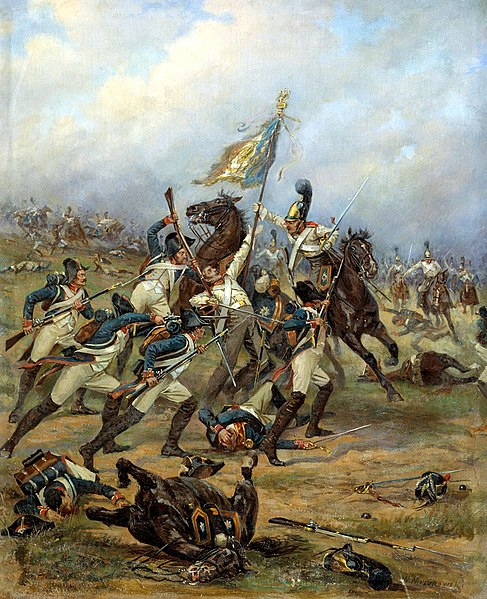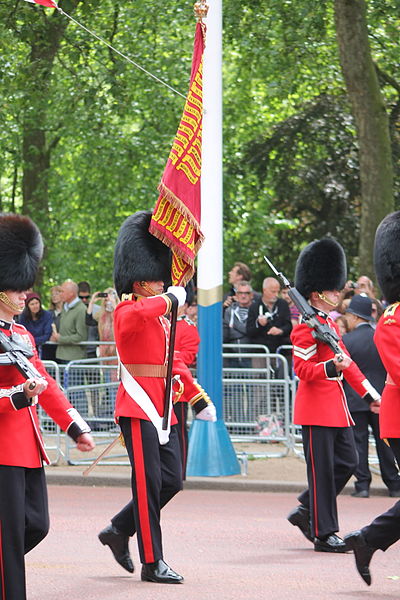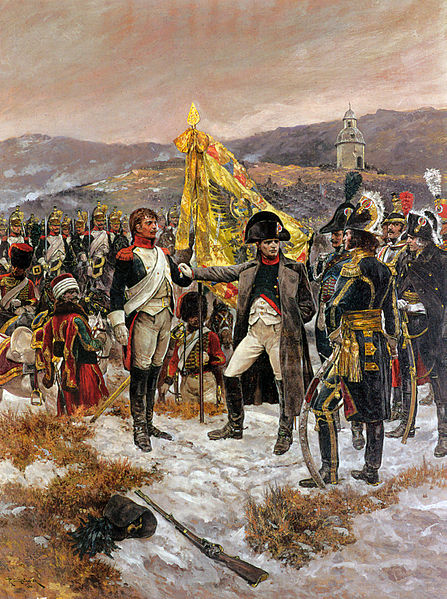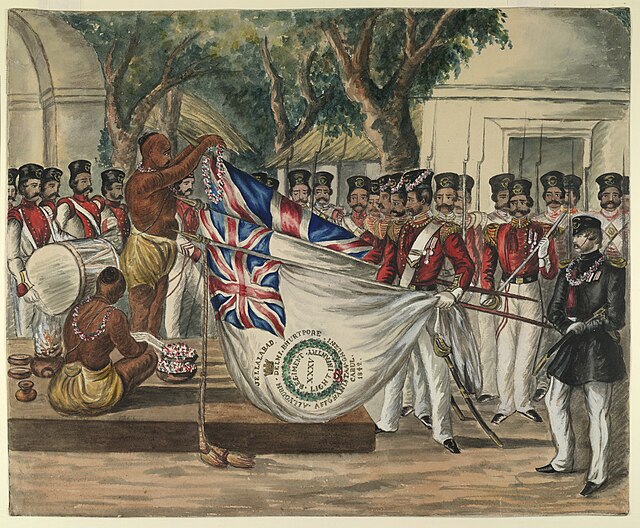In military organizations, a colour guard is a detachment of soldiers assigned to the protection of regimental colours and the national flag. This duty is highly prestigious, and the military colour is generally carried by a young officer (ensign), while experienced non-commissioned officers are assigned to the protection of the national flag. These non-commissioned officers, accompanied in several countries by warrant officers, can be ceremonially armed with either sabres or rifles to protect the colour. Colour guards are generally dismounted, but there are also mounted colour guard formations as well.
A colour guard detachment during the opening ceremony for the North Atlantic Council and Military Committee SEA Day Exercise.
Fight for the flag between French line infantry and Russian Guard cuirassiers at the battle of Austerlitz (1805).
Colour guard of the Chinese People's Liberation Army.
The old colours of the Royal Regiment of Canada are marched off by colour guards, during the presentation of new colours to the regiment.
Military colours, standards and guidons
In military organizations, the practice of carrying colours, standards, flags, or guidons, both to act as a rallying point for troops and to mark the location of the commander, is thought to have originated in Ancient Egypt some 5,000 years ago. The Roman Empire also made battle standards reading SPQR a part of their vast armies. It was formalized in the armies of Europe in the High Middle Ages, with standards being emblazoned with the commander's coat of arms.
The Grenadier Guards colours
Stitching the Standard by Edmund Leighton (1911), oil on canvas.
Napoleon I awarding the Legion d'Honneur to a dragoon for the capture of an Imperial regimental flag.
Watercolour painting showing a Hindu priest garlanding the regimental colours of the 35th Bengal Light Infantry, a regiment of the Bengal Native Infantry in the Army of East India Company's Bengal Presidency in c. 1847 (British Library)








